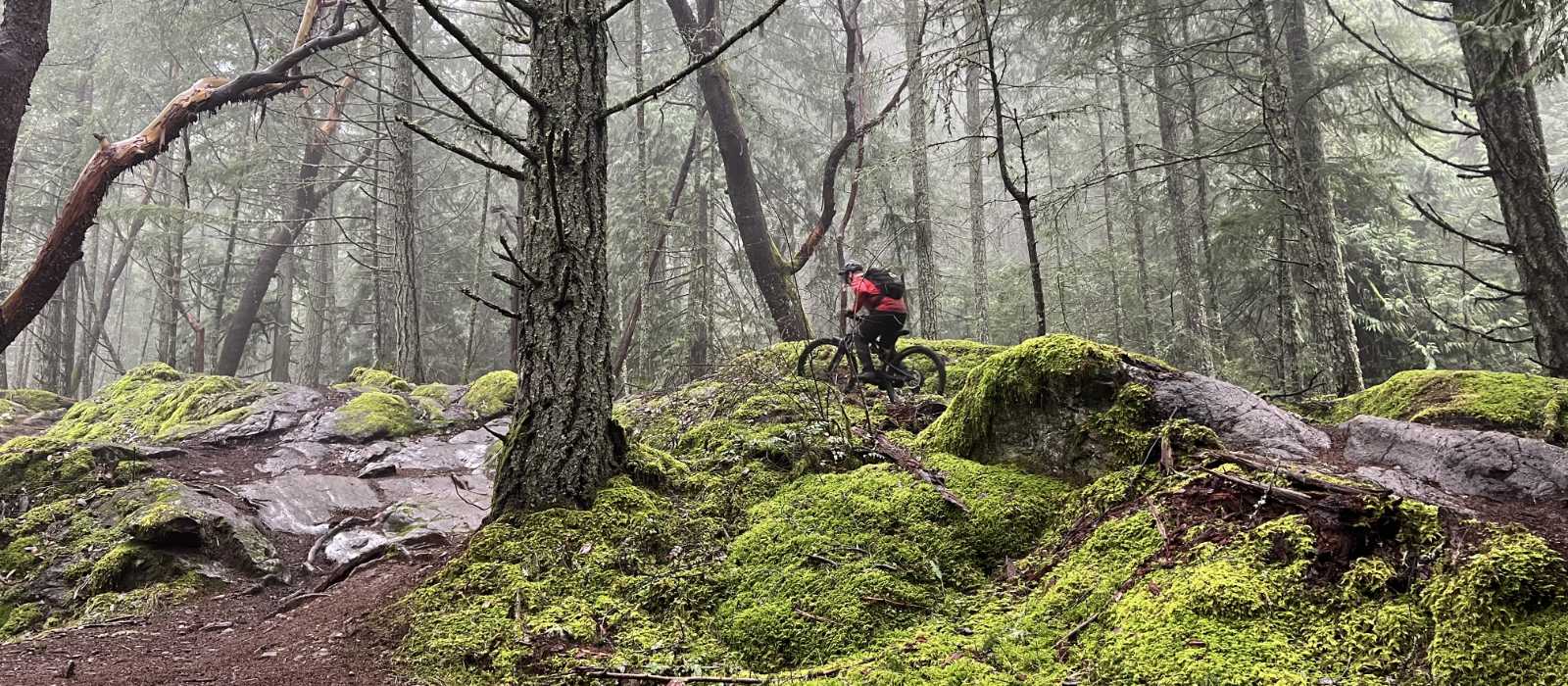By Coach Adam Walker, The Cycling Co
Happy New Year!
Wait. What???
Forget what it says on the calendar. November 1 is New Years Day for mountain bike athletes!
It takes about 8 weeks of preparation in the coming Foundation Phase to prepare the body for what is coming in January and more as we move into the spring.
We are rolling into November and in BC, we have shifted gears from long, warm early autumn days with hero dirt to seeing more rain at lower elevations. We’ve already had some significant snowfalls up high and the skiers out there are frothing to hit the mountains for some snow sliding.
Everywhere in the northern hemisphere, daylight is becoming more scarce and with the shorter days many athletes are moving indoors for more of our training. It can be tempting to put the bike away right now, but you’ve got big goals for next year, so let’s make the most of this month!
The Foundation Phase
If you made good use of October, you should feel like you have accumulated a good foundation of aerobic fitness and have introduced and adapted to some resistance training in the past several weeks.
Structure This Month
If you are still racing cyclocross, you might be smack in the middle of that part of the season. Your weeks might be focused on a lot of short punchy efforts with sprint work, short intervals, skill work and variably paced VO2 max sessions like 30/30’s or something similar.
Try to ride your mountain bike at least a couple of times a week to maintain your MTB specific technical skills.
For those of us who aren’t racing ‘cross, we fall primarily into two camps:
• Those who can ride outside through the winter.
• Those who can’t.
If You Ride Through Winter
If you live somewhere where you are lucky (or brave enough) to fall into the first camp, keep things rolling with 3-4 rides per week (even if some of those are indoors), but really use what good weather you have to focus on skill development, a bit of aerobic intensity, and endurance work.
A lot of this work on the bike can be unstructured as you shift to more structure and more frequency in the gym doing resistance training.
As your overall training volume may decrease slightly, the proportion of gym-time and other cross training ideally rises.
If You Don’t Ride Outside Through Winter
In stormy weather, cold weather, or places where it snows, most people will opt to find alternate activities. An indoor cycling class, crossfit, trainer workouts, running, and hiking can be great options. Once the snow flies, skiing and snowshoeing can be great options.
When introducing new activities, remember that your motor might be firing on all cylinders, but your transmission might need some work. That means you’ve developed a huge aerobic engine to help you to perform any of these cross training activities, but your muscles might not be tuned to manage the sport-specific, weight bearing loads and eccentric contractions necessary for running, hiking DOWN steep terrain (especially with a pack), or heavier strength work.
Whatever cross training sports you choose, start slow and progress gradually.
The Importance of Strength Training
At the risk of sounding like a broken record I’m going to cover this again in case you missed it in last month’s video and blog.
As bike racers, many of us would prefer to “just ride” all the time. But strength work is important for injury prevention, mobility and stability, core strength, managing forces and efficiency on the bike, and finally, pedalling power.
Masters athletes, in particular, face the reality of muscle loss, or sarcopenia, as we age. Women also have a higher risk of osteoporosis. Resistance training can help prevent both of these.
If you are just beginning your resistance training routine, start slowly with a few sessions that are focused around quality movement and adaptation. When you begin to add weight, focus on proper technique with very manageable loads.
Focus on basic movements: Squat, hinge, lunge, push, pull, rotate.
We aren’t power lifters. We are bike riders who want to improve our riding. Remember this when you’re in the gym.
Also, keep in mind that for everyone else in the gym, that IS their exercise or training. For you, it’s preparing you for your training. Different goals. Different focus.
So what could your week look like?
There are a lot of different ways to bake a cake, and the actual structure of your week likely depends on your work schedule.
Ideally, you want to include these components:
• 2 intensity workouts (1 “hard” one, 1 “medium” one)
• 2 endurance sessions (these don’t need to be all day mega rides that empty the tank)
• 2 resistance training (strength) workouts
Here’s an outline you can follow:
Monday: Rest
Tuesday: Intensity – MTB ride with intensity or indoor trainer ride
Wednesday: Resistance Training/Strength Work
Thursday: Aerobic Work – Tempo or Trail Ride outside, Trainer Session OR Cross Training
Friday: Resistance Training/Strength Work
Saturday: MTB adventure ride OR Indoor Trainer Session
Sunday: Endurance – Road, Gravel, Hiking, Trail Run or a longer (but easier) MTB ride.
The key is to build consistency through November and December with a solid FOUNDATION for what is to come.
 Coach Adam Walker is a certified professional mountain bike coach and has coached athletes to World Cup and World Championship wins. A masters athlete himself, he is passionate about helping all riders achieve their biggest goals, like completing BC Bike Race.
Coach Adam Walker is a certified professional mountain bike coach and has coached athletes to World Cup and World Championship wins. A masters athlete himself, he is passionate about helping all riders achieve their biggest goals, like completing BC Bike Race.
If you got value from this content and you want more, Adam’s Club Shred program could be a great option for you!
With weekly group calls, a content bank of videos like this, and a group discussion forum, it’s a great resource for any mountain biker looking to increase their knowledge and performance. Check out Club Shred.

